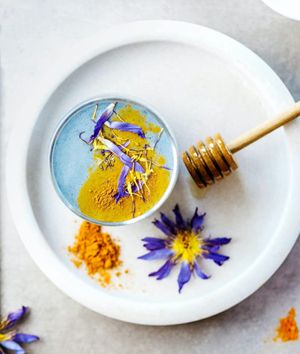Sugaring is the newest hair removal technique offered by salons and it just might be the answer to all your hair removal woes! There are so many hair removal techniques out there, but they all come with their drawbacks. Shaving is time-consuming and gives razor bumps, while hair removal creams are stinky and messy. Epilators do not work for all skin types and waxing is pretty painful! So, is there such a thing as a perfect hair removal method, or is it a far-fetched dream? Our best bet at the moment is sugaring because it comes without the drawbacks of the other hair removal techniques. If you are not entirely sure what sugaring is all about and whether it is meant for you, fret not! I will be sharing everything you need to know about sugaring today!
What is Sugaring And Is It Painful?
Sugaring involves hair removal with the help of a paste of hot sugar, lemon, and water. So how does what sounds like hot lemonade remove unwanted hair? The magic lies in the perfect consistency of the paste, which helps to pull out unwanted hair from the roots. Not only does this method rely on all-natural ingredients, but it also does not damage live skin cells. This gives it an upper hand over other techniques.
The sugar paste is applied to powdered skin against the direction of hair growth and is then pulled along the direction of hair growth. It allows the sugar to pull out the hair from the roots without coming in contact with live skin cells. Unlike waxing, you do not need separate strips to pull out the paste. Also, sugar is water-soluble, so any residue left on the skin can be washed off easily.
Those who have experienced both waxing and sugaring usually find sugaring less painful. However, sugaring is obviously not painless. It involves pulling out the hair from the roots, which has to come with some amount of pain. That being said, regular sugaring will weaken the hair follicles and reduce regrowth over time. This means that it should hurt you less with every appointment. Of course, the temperature of the paste and the technique will affect the amount of pain you experience. It is, therefore, best to go to a salon that is renowned for their sugaring services.
How Much Does It Cost?
The cost of sugaring will depend on the areas you wish to remove hair from as well as the salon you visit. Most parts of the body, be it toes or underarms, upper lip or bikini line, can be sugared. The cost of sugaring is usually higher than the cost of waxing. Sugaring smaller areas such as the upper lip or toes will set you back by $10-$15. Getting your legs sugared will usually cost around $120 in a good salon. Depending on the rate at which your hair grows back, you will need to go in for the next round of sugaring after 3-5 weeks. Just like with waxing, it is best to wait for a little bit of fuzz to grow out before your next sugaring appointment. If you plan to get your full body sugared regularly, it will cost you around $200-$300 every month.
The After-Care Involved
The best thing about sugaring is that any residue can be washed off easily with water, unlike the sticky residue left behind from waxing that only dissolves in oil. You can shower within 24 hours of your appointment but avoid hot water and exfoliation. Also, wearing loose clothes is recommended to let your skin breathe, especially after sugaring the bikini line. Avoid skin-to-skin contact, hot jacuzzis, and tight clothing for 24 hours to minimize the chances of a bacterial infection.
After 24 hours, you can incorporate an exfoliant in your routine to prevent ingrown hair, as well as a moisturizer to keep the skin soft and supple. Salicylic acid is an excellent chemical exfoliant to keep the dead skin and ingrown hair at bay. Also, opting for a vitamin E based moisturizer will not just make your skin soft but will also prevent inflammation.
The Side Effects Of Sugaring
Most of the risks of sugaring come into the picture if the technique is not right. If the paste is too hot, it can burn your skin, and if the pulling technique is not correct, it can bruise your skin. This is why DIY sugaring is discouraged. First of all, the paste is hard to make at home because it hardens very quickly if not heated to the right temperature. Secondly, since there are no strips involved, you need to be a pro at pulling off the paste from your skin. Another risk associated with sugaring is that it may lead to or worsen folliculitis if the sugar is left for too long on the skin. Microorganisms can feed on sugar, thereby leading to this side effect. This is why you should leave sugaring to the experts for smooth and hairless skin.
Is Sugaring Safe For Everyone
It is always best to consult a dermatologist before you opt for any treatment for your skin, including sugaring. This technique is not recommended for those who have severe dryness or eczema. Also, if you’re using Vitamin C, Retinol or steroids then sugaring is not safe for you. These ingredients sensitize the skin to some extent, and sugaring on top of it can leave you with over-exfoliated and sensitive skin. Additionally, sugaring is not recommended on the areas of skin that have cold sores, bruising, sunburn, or rashes. Basically, if you have irritated or inflamed skin then it is best to avoid sugaring until your skin gets better.
If you are someone who is used to waxing then sugaring can be an even more convenient option for you. It retards hair growth unlike shaving and gets less painful with every session. What more could you ask for from a hair removal technique? The saying “no pain, no gain” holds true here as well, but in this case, the gains outweigh the pain by a huge margin! So, the next time you visit a salon, do give sugaring a shot!





